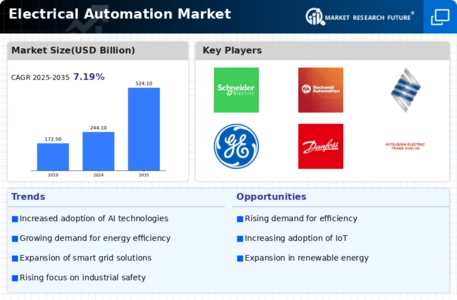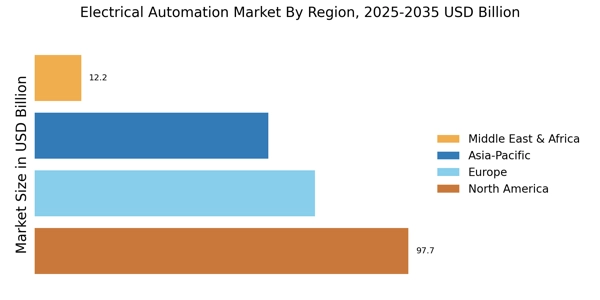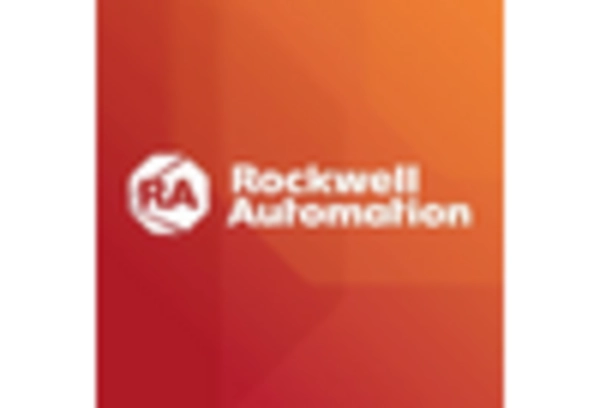Growing Focus on Sustainability
Sustainability has emerged as a critical driver in the Electrical Automation Market. Companies are increasingly prioritizing eco-friendly practices and energy-efficient solutions to reduce their carbon footprint. The adoption of automation technologies allows for better resource management and waste reduction, aligning with global sustainability goals. Data indicates that industries implementing automation can achieve energy savings of up to 30%, which is a compelling incentive for businesses. As the emphasis on sustainable practices intensifies, the Electrical Automation Market is likely to expand, with companies investing in innovative automation solutions that promote environmental responsibility.
Expansion of Smart Infrastructure
The expansion of smart infrastructure is a key factor influencing the Electrical Automation Market. Urbanization and the need for efficient resource management are driving the development of smart cities, which rely heavily on automation technologies. These infrastructures utilize advanced automation systems to manage utilities, transportation, and public services more effectively. The integration of smart grids and intelligent transportation systems enhances operational efficiency and improves the quality of life for residents. As investments in smart infrastructure continue to grow, the Electrical Automation Market is poised for significant expansion, with a focus on innovative solutions that support urban development.
Technological Advancements in Automation
Technological advancements play a pivotal role in shaping the Electrical Automation Market. Innovations such as artificial intelligence, machine learning, and advanced robotics are revolutionizing automation processes. These technologies enable real-time data analysis and predictive maintenance, which significantly enhance operational efficiency. The introduction of smart sensors and connected devices facilitates seamless communication between machines, leading to optimized performance. As industries increasingly adopt these cutting-edge technologies, the Electrical Automation Market is expected to witness substantial growth. The integration of these advancements not only improves productivity but also reduces downtime, thereby contributing to the overall efficiency of operations.
Increased Demand for Automation Solutions
The Electrical Automation Market experiences a notable surge in demand for automation solutions across various sectors. Industries such as manufacturing, oil and gas, and utilities are increasingly adopting automation technologies to enhance operational efficiency and reduce labor costs. According to recent data, the automation market is projected to grow at a compound annual growth rate of approximately 9% over the next five years. This growth is driven by the need for improved productivity and the ability to maintain consistent quality in production processes. As companies strive to remain competitive, the integration of advanced automation solutions becomes essential, thereby propelling the Electrical Automation Market forward.
Regulatory Compliance and Safety Standards
The Electrical Automation Market is significantly influenced by stringent regulatory compliance and safety standards. Governments and regulatory bodies are implementing policies that mandate the adoption of automation technologies to ensure workplace safety and environmental sustainability. Compliance with these regulations often necessitates the integration of advanced automation systems, which can monitor and control processes more effectively. As industries strive to meet these requirements, the demand for automation solutions is likely to increase. This trend not only enhances safety but also drives innovation within the Electrical Automation Market, as companies seek to develop compliant and efficient automation systems.


















Leave a Comment